Covid, because there is a risk of a de facto lockdown. Gimbe Report
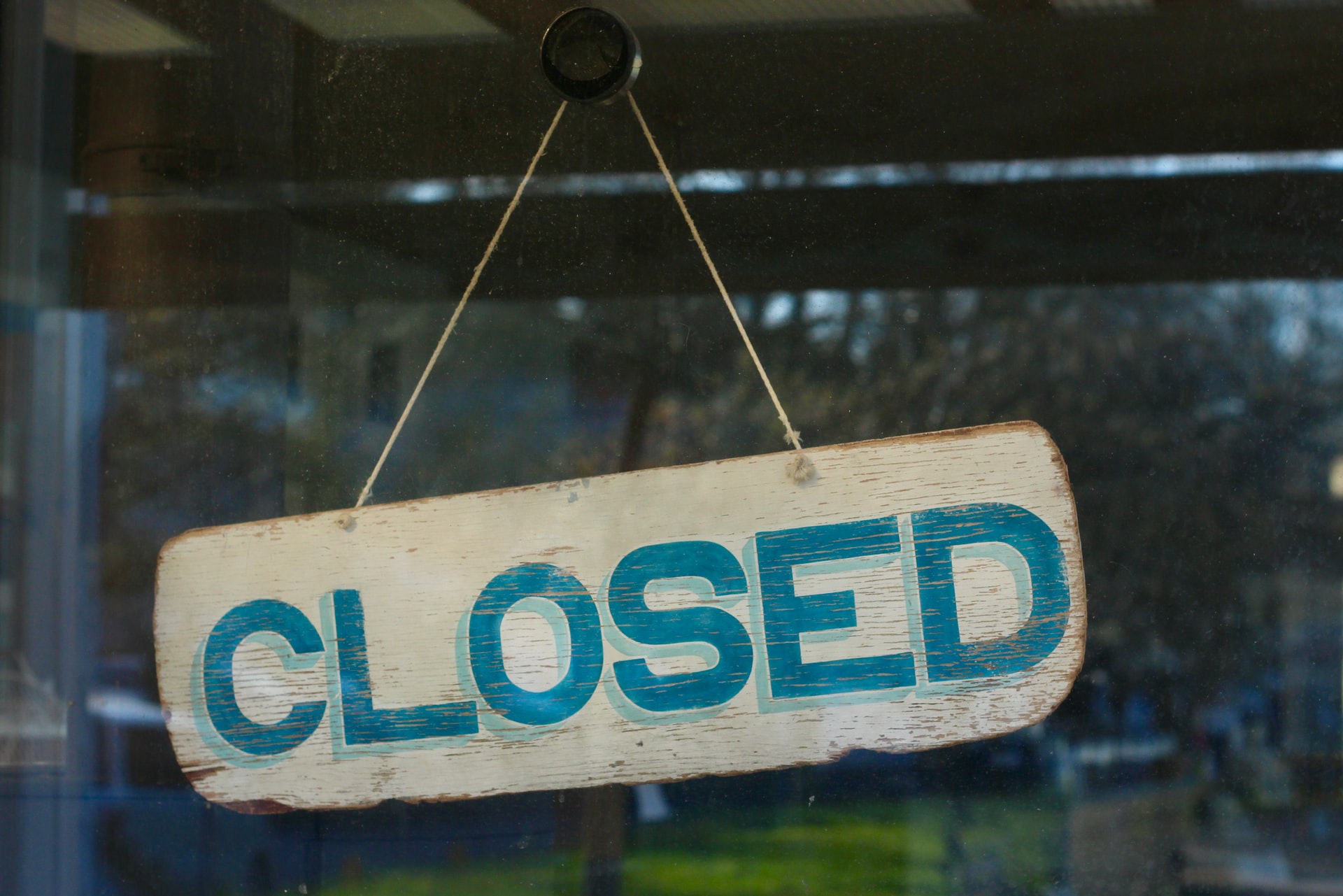
The increase in cases and the stalled vaccinations threaten a de facto lockdown that weighs not only on hospitals but also on the economy. Numbers and considerations of the Gimbe foundation
With vaccinations stalled because we have chosen not to complete the vaccination cycle or because we are waiting for updated vaccines , it is not surprising that the number of new cases, hospitalizations, ICU admissions and deaths increases week by week. Increases that, according to the Gimbe foundation, must be avoided to avoid a "de facto lockdown" also because it is "risky to postpone the fourth dose to autumn with 'updated vaccines' whose effects on serious illness are not known to date".
Here is what emerged from the Gimbe monitoring in the week of June 29-July 5.
AT WHAT POINT IS THE VACCINAL CAMPAIGN
The percentages of those who have received at least one dose of vaccine (88.1% of the audience) and of those who have completed the vaccination cycle (86.6% of the audience) remain unchanged.
The unvaccinated are 6.84 million, of which 2.75 are cured and therefore protected only temporarily.
Nearly 8 million people, 7.89 to be exact, have not yet received the third dose, of which 2.43 have recovered and cannot receive it immediately.
There are then, as always, clear regional differences for the coverage with fourth doses of the immunocompromised (from 10.7% of Calabria to 100% of Piedmont) and of the other fragile ones (from 6.6% of Calabria to 41.3% of Piedmont).
WHY IT IS RISKY TO DELAY VACCINATION WAITING FOR UPDATED VACCINES
"The net increase in viral circulation – explains the president of the Gimbe foundation, Nino Cartabellotta – increases the likelihood of contagion and the development of serious disease in those who have taken the third dose for over 120 days: for this reason the choice of postpone the fourth dose to autumn with 'updated vaccines', of which to date neither the timing of actual availability nor the effects on serious illness are known ”.
HOW MANY VACCINES WERE GIVEN
As of July 6, Gimbe reports, 88.1% of the audience (n.50,805,626) had received at least one dose of vaccine (+2,964 compared to the previous week) and 86.6% (n. 49,932,092 ) completed the vaccination cycle (+3,735 compared to the previous week).
NEW VACCINATES FALL
In the week taken into consideration by the monitoring, the new vaccinates decreased: 2,964 compared to 3,128 of the previous week (-5.2%). Of these, 35.8% is represented by the range 5-11: 1,062, with a reduction of 5.3% compared to the previous week. Even among the over 50s, who are more at risk of serious illness, the number of new vaccinated people stands at 755 (-7.7% compared to the previous week).
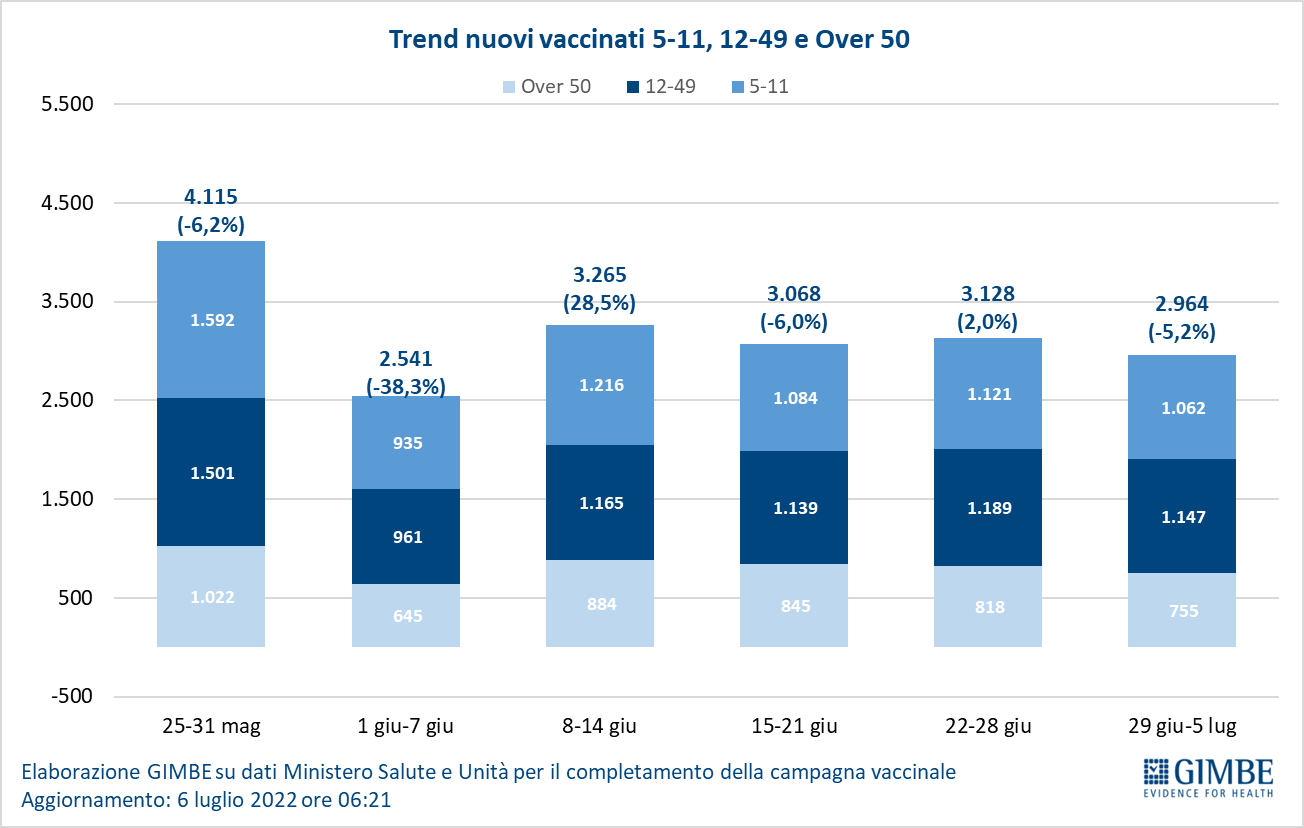
HOW MANY ARE NON-VACCINATED
As of July 6, the unvaccinated, that is, those who have not received even a dose of the vaccine, are 6.84 million people over the age of 5.
Of these, 4.1 million are vaccinable, while 2.75 million are temporarily protected as they have been cured of Covid for less than 180 days.
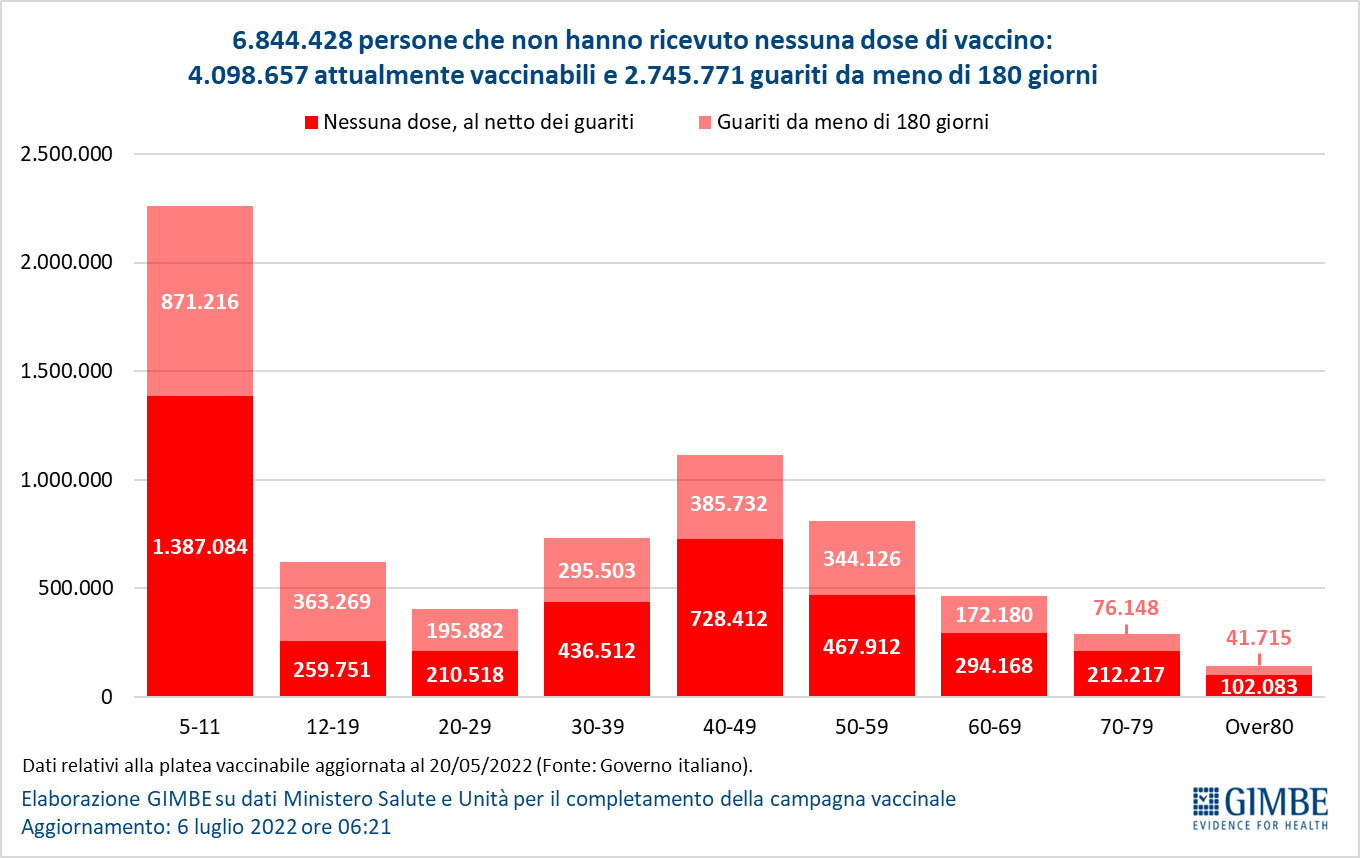
However, there are clear regional differences in both groups. In the first, it ranges from 4.4% of the Autonomous Province of Trento to 10.2% of Calabria; in the second, from 3.1% of Molise to 9.2% of the Autonomous Province of Bolzano.
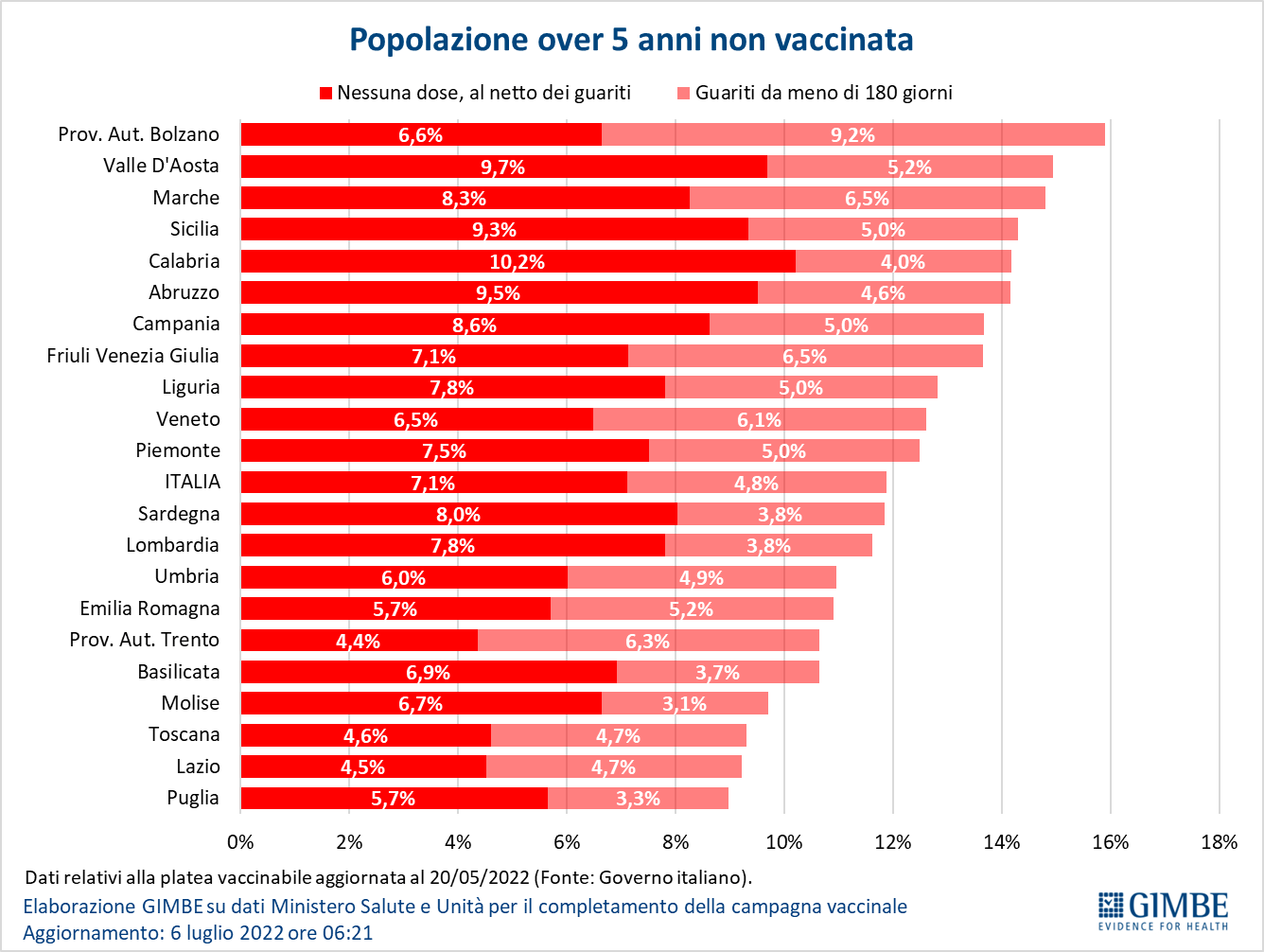
THE 5-11 YEARS GROUP
2,588,149 doses were administered to children aged 5 to 11: 1,397,769 received at least 1 dose of vaccine (of which 1,276,077 completed the vaccination cycle).
The national coverage rate for this age group is 38.2%. However, even in this case clear regional differences are reported: from 20.8% of the Autonomous Province of Bolzano to 53.8% of Puglia.
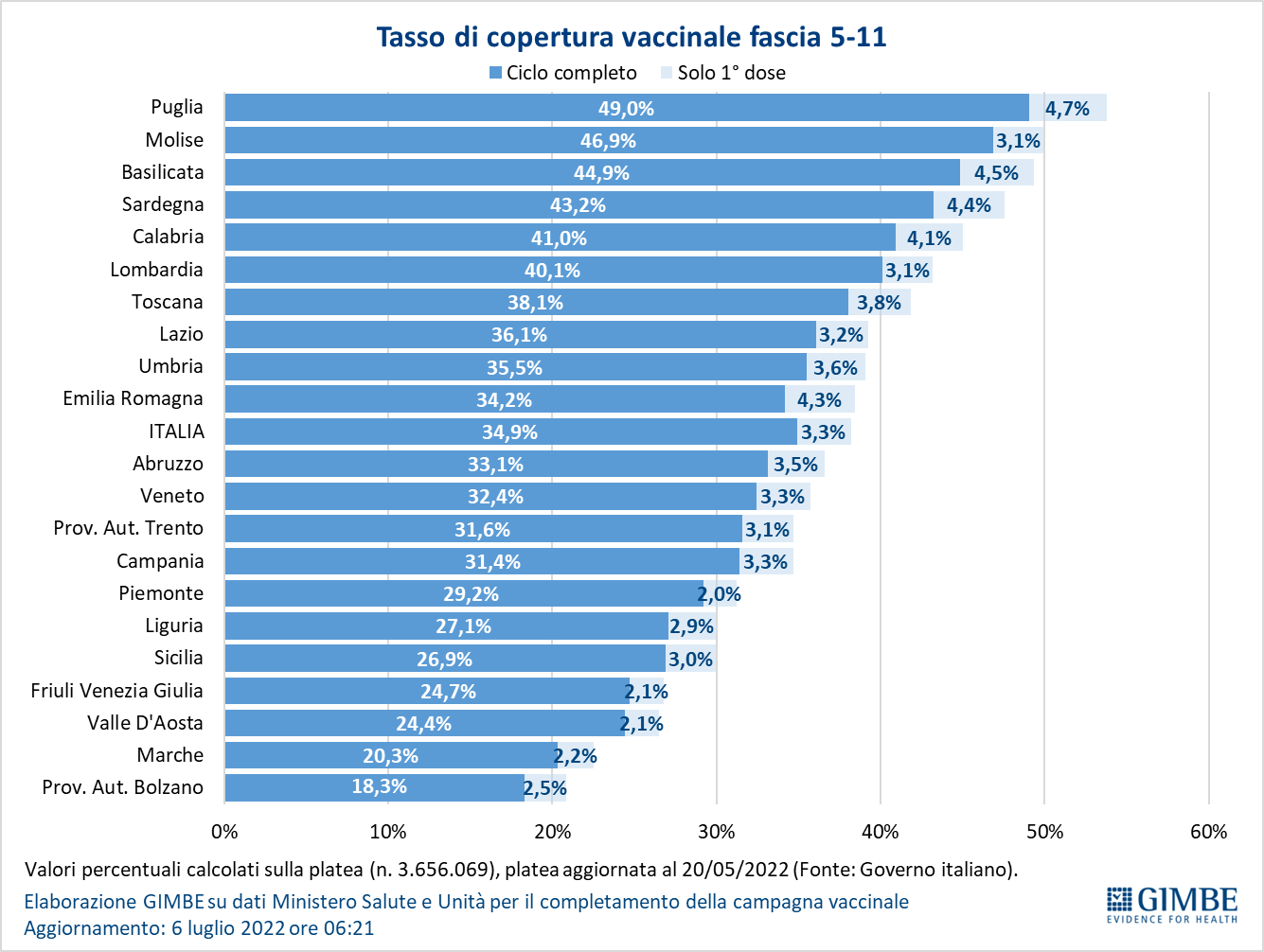
HOW MANY PEOPLE HAVE RECEIVED THE THIRD DOSE AND HOW MANY COULD
The third doses administered on July 6 were 39,808,872, with a 7-day moving average of 5,859 doses per day.
As reported by Gimbe, based on the official audience (n. 47.703.593), updated as of May 20, the national coverage rate for third doses is 83.5%, again with substantial differences from region to region. They range from 77.7% of Sicily to 87.4% of Valle D'Aosta.
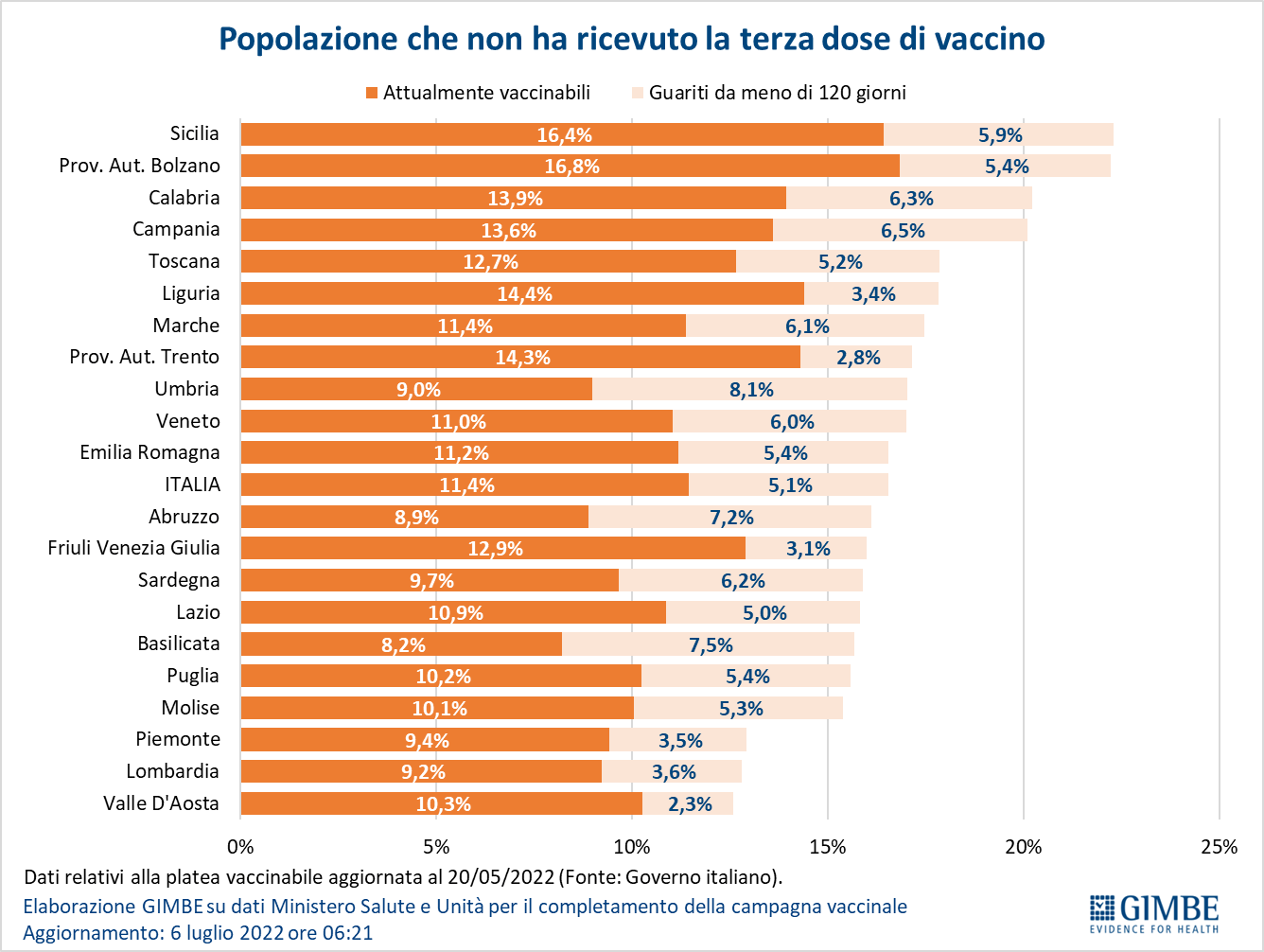
The people who, on the other hand, have not yet received the booster dose are 7.89 million, of which (Figures 14 and 15): 5.46 million can receive it immediately and 2.43 million who cannot receive it immediately as they are cured. for less than 120 days.
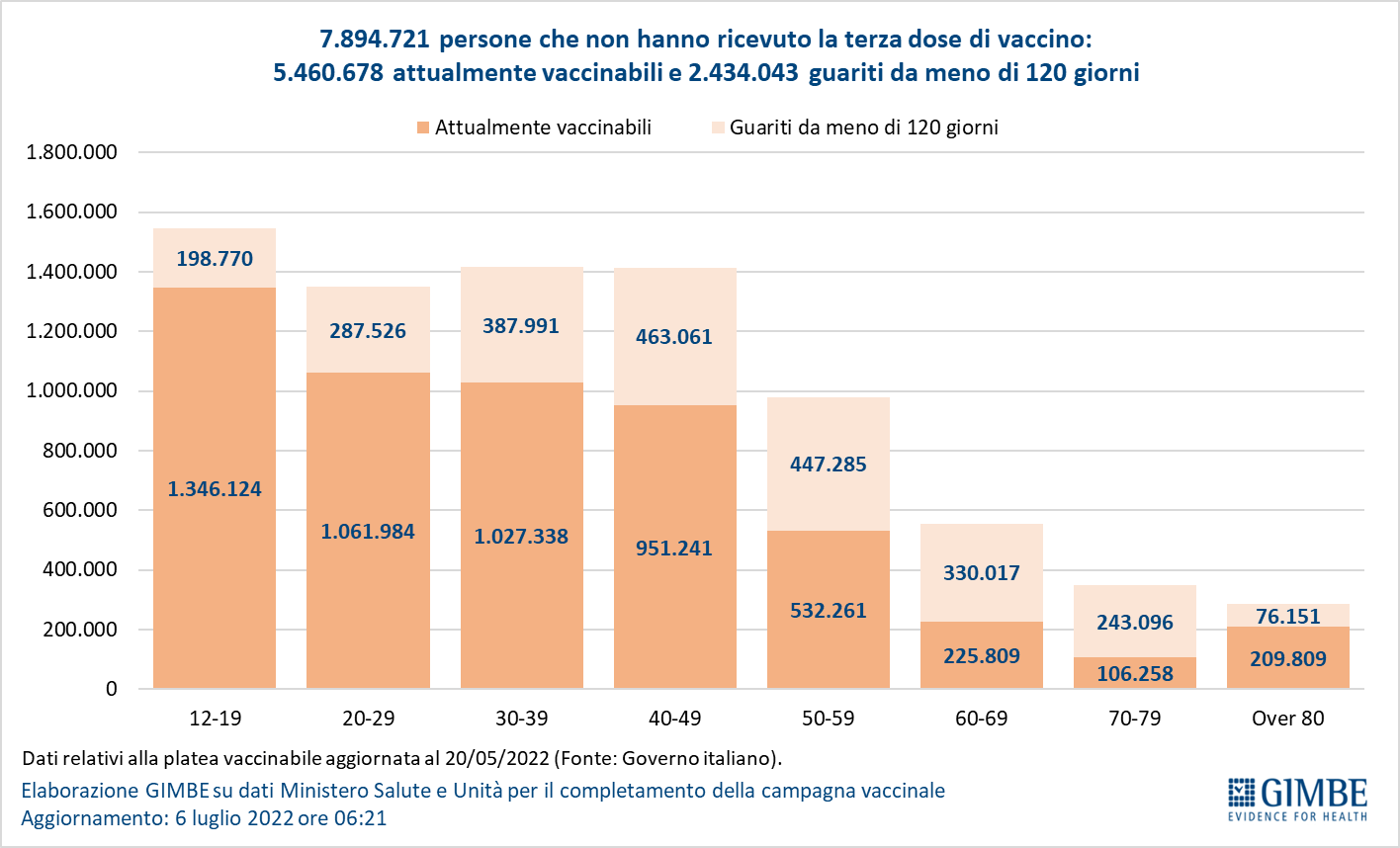
FOURTH IMMUNOCOMPROMISED DOSE
As of July 6, according to the monitoring, the fourth doses administered to immunocompromised people are 349,803, with a moving average of 2,259 administrations per day, down from 2,263 last week (-0.2%).
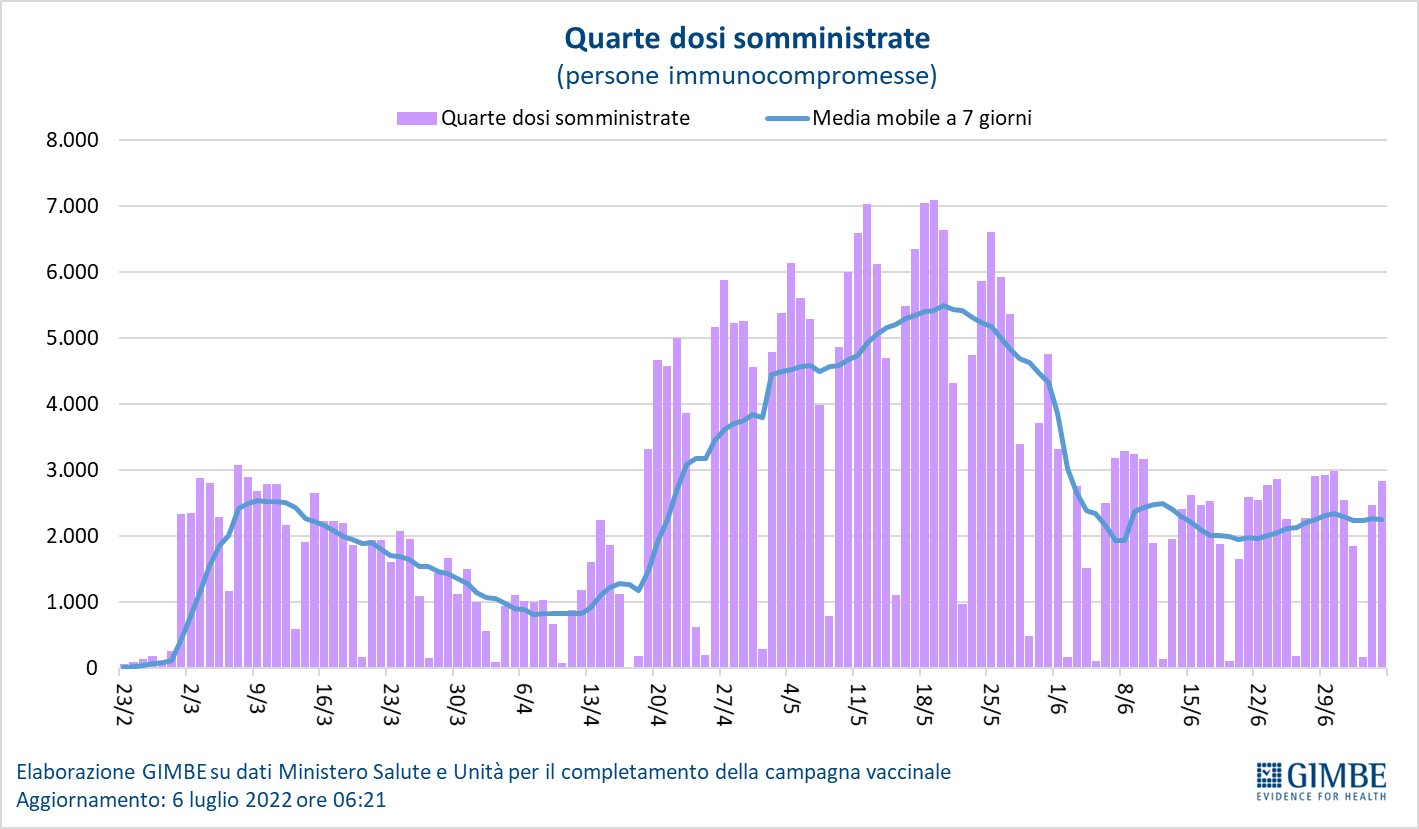
Based on the official audience (n.791.376), updated as of May 20, the national coverage rate for the fourth doses (underestimated by the failure to update the audience) is 44.2% with clear regional differences: from 10.7% of the Calabria 100% of Piedmont.
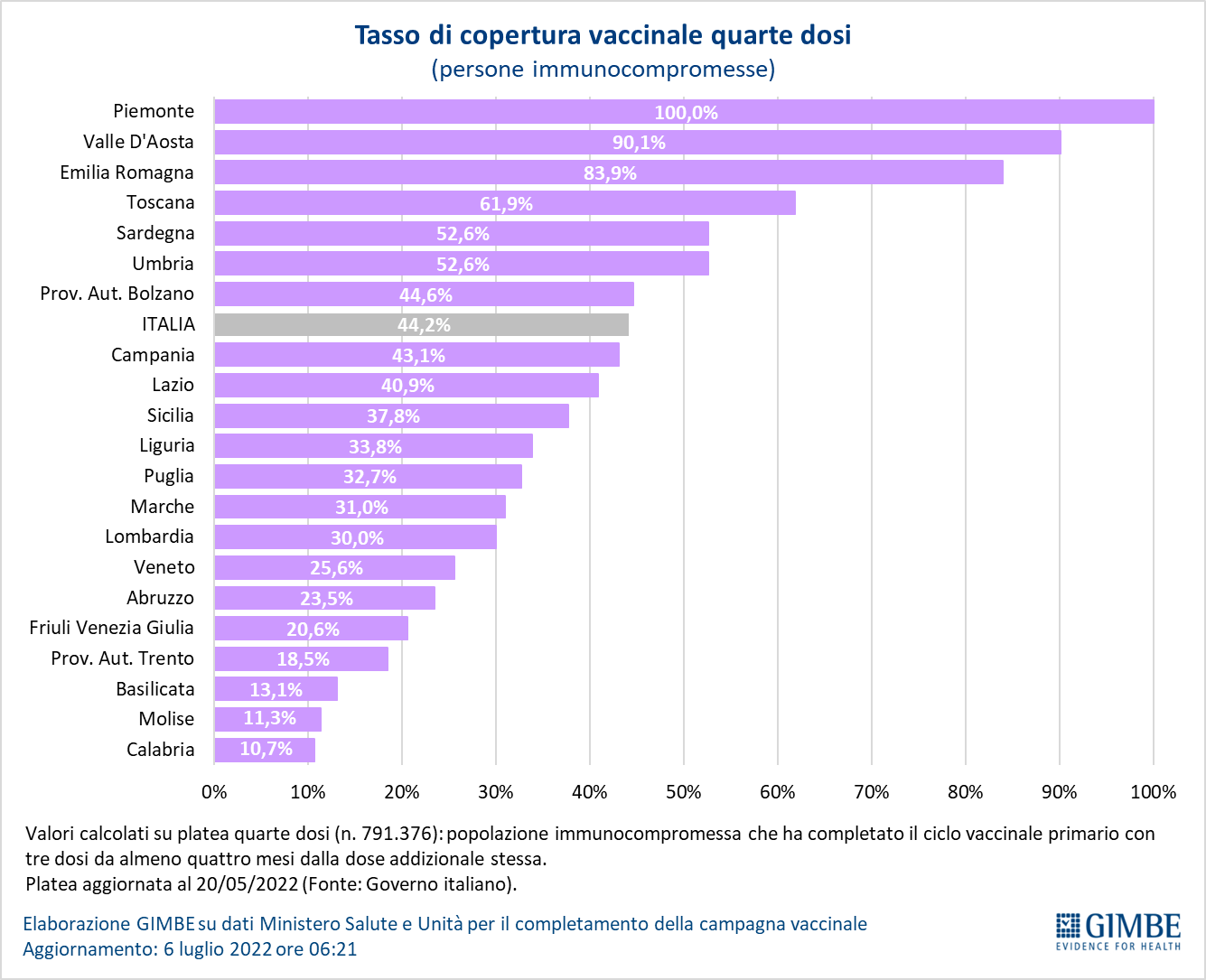
FOURTH DOSE OVER 80, FRAGILE (60-79), RSA GUESTS
As regards, however, the fourth doses to all other people to whom the Ministry of Health recommends a second booster – that is over 80, frail (60-79 years) and guests of the RSA – the administrations carried out on 6 July are 932,800, with a moving average of 5,809 administrations per day, down from 6,109 last week (-4.9%).
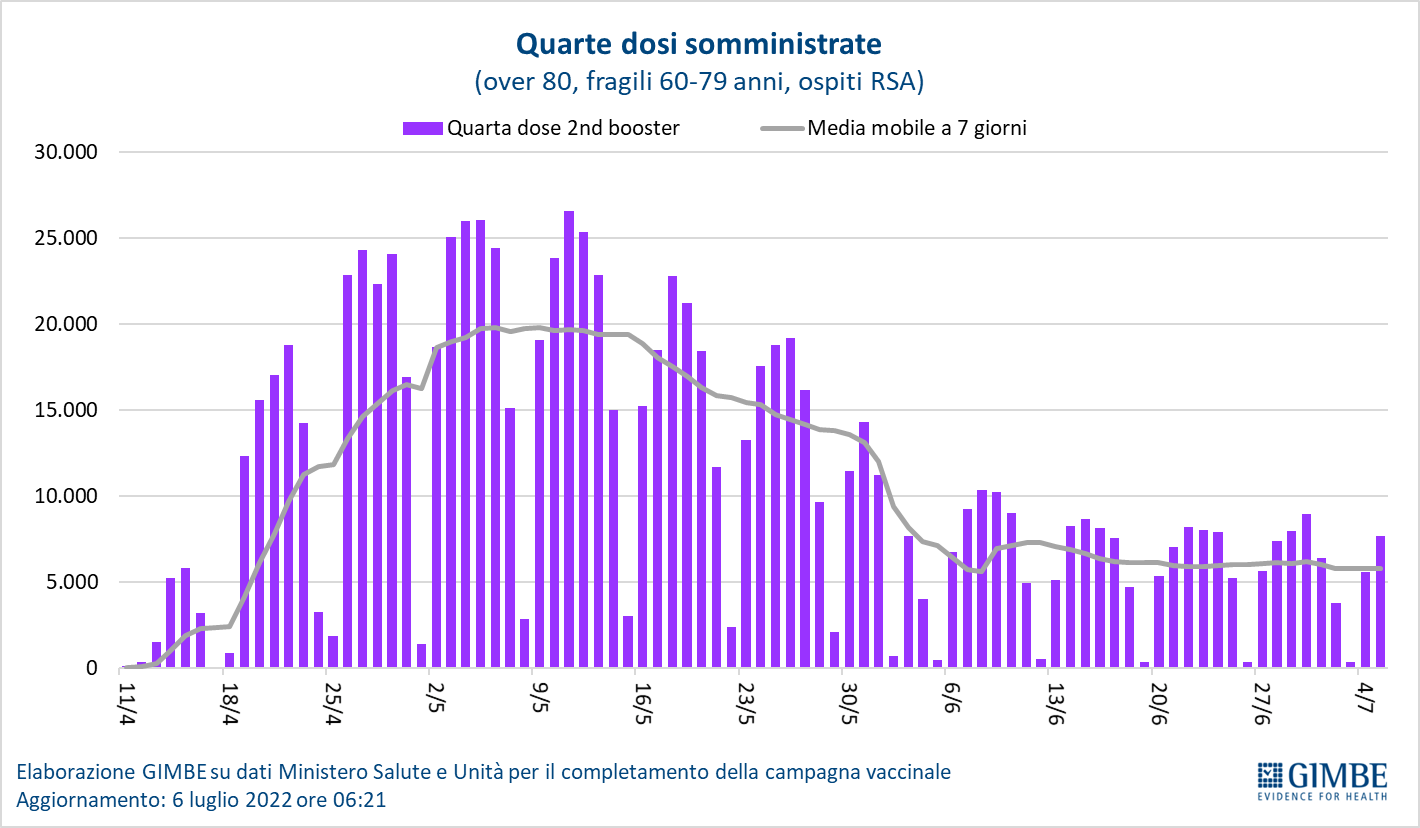
According to Gimbe monitoring, based on the official audience (4,422,597 of which 2,795,910 are over 80, 1,538,588 fragile patients aged 60-79 years and 88,099 guests of the nursing homes who do not fall into the previous categories) , updated to 20 May, the national coverage rate for the fourth doses (underestimated by the failure to update the audience) is 21.1% with clear regional differences: from 6.6% in Calabria to 41.3% in Piedmont.
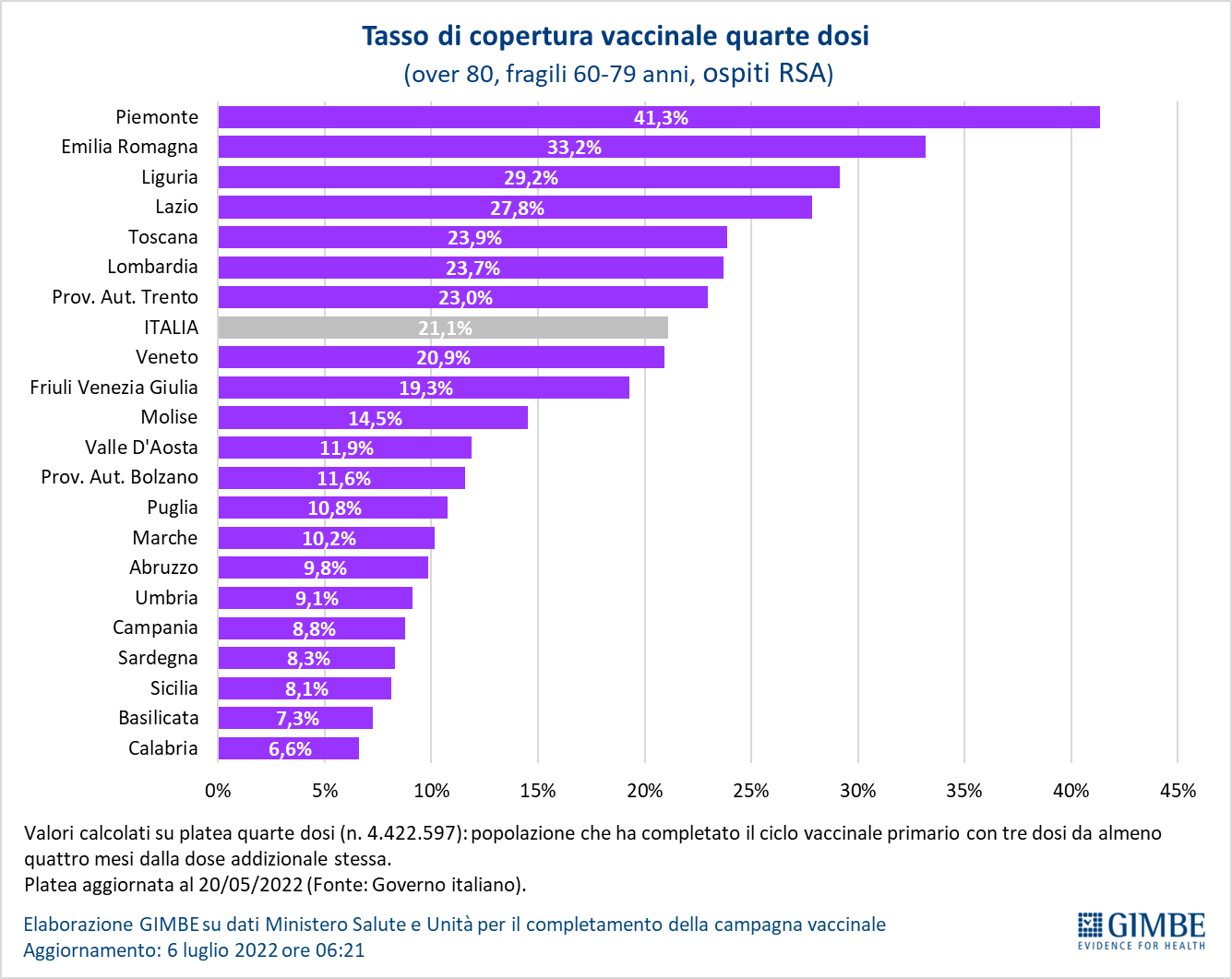
THE RESPONSIBILITIES OF THE REGIONS
For Cartabellotta "it is unacceptable that, while the administration of fourth doses for vulnerable patients remains substantially at stake, however, with significant regional inequalities, the debate shifts to the advisability of expanding the audience to all over 70s, without first enhancing skills of active call by the Regions at the bottom of the rankings ".
WHAT IS URGENT TO DO
According to President Gimbe, "in addition to now accelerating the administration of the fourth dose in vulnerable patients, it is essential to contain viral circulation by using masks indoors, especially in crowded and poorly ventilated places, as well as outdoors in conditions of large crowds. with activities with a high probability of contagion ".
WHY RISK A "FACT LOCKDOWN"
As Cartabellotta recalled, "beyond the individual choice to declare their positivity to the health authorities, home isolation is not synonymous with asymptomaticity and one has to ask oneself how much it costs to the country (lost working days, activities closed for Covid, canceled holidays, etc.) a high percentage of the symptomatic and / or isolated population at home for Covid, which moreover risks determining a 'de facto lockdown' on various services, including tourist services ".
This is a machine translation from Italian language of a post published on Start Magazine at the URL https://www.startmag.it/sanita/covid-perche-si-rischia-un-lockdown-di-fatto-report-gimbe/ on Thu, 07 Jul 2022 11:29:15 +0000.
